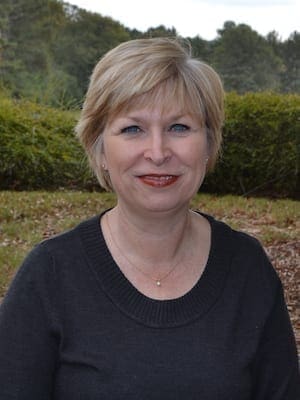Baptist women have been ministering in congregations for as long as Baptist churches have existed. Prior to the 1870s, some Baptist women provided strong leadership in their churches, others supplied pastoral care for church members and still others preached publicly.
These Baptist women were effective in their ministries and compassionate in their service, yet for hundreds of years, they served only informally. None held official church positions or titles, and none were ordained.
Formal recognition–ordination–was slow in coming, but perhaps it came earlier than what most Baptists think. The original Free Will Baptist denomination began ordaining women as early as 1876, and Northern Baptists (now American Baptist Churches, U.S.A.) ordained women as early as 1882.
One of the first Northern Baptist women ministers was Frances E. Townsley (1849-1909), who was ordained in April 1885.
During Townsley’s childhood, most of which was spent in Shelburne Falls, Mass., she endured numerous challenges. Her father died during a cholera epidemic, and her widowed mother was forced to move her children several times and to take in boarders to support the family.
Despite these hardships, Townsley received an excellent public-school education. The boarders living in her home also served as informal teachers, encouraging her to read and to participate in discussions of politics, religion, history, music and literature.
In addition to boarders, the Townsley home welcomed visitors, including former slave and abolition leader Sojourner Truth, who traveled to Shelburne Falls to deliver lectures. Townsley later wrote of this visit, “Though a wonderful orator and profound thinker, being a Negro she found few (up north, too!) who were quite willing to entertain her, [my] mother did so, and told me long after, that she would gladly have done so for [Sojourner’s] prayers. Even I recall them as marvels of pathos, spiritual power, and devotion.”
As a child, Townsley attended Baptist churches, where she heard the “Christ message,” but found it hard “to see the way of the cross.” After several years of struggle, she finally “begged God for help in the first real self-surrendering prayer that I had uttered…. I was saved that hour.”
In 1867 Townsley enrolled at Wheaton College, but her mother’s death the next year forced the young woman to seek employment as a teacher. One day a young Episcopalian woman, Nell Marsh, appeared in Townsley’s classroom and proclaimed, “Dear, I am convinced that you are to preach the everlasting gospel of our precious Lord!”
Townsley was shocked, but after much prayer, she began writing sermons and soon was invited to preach in a Congregational church. By 1875, she was preaching in churches throughout New England and holding evangelistic services. A few years later, a church in her hometown of Shelburne Falls licensed her to preach.
In 1883, Townsley settled in Fairfield, Neb., “among a few unchurched Baptists.” Together they built a building, and although she continued to travel and preach, she soon began serving as the pastor of the Fairfield Baptist Church.
In January 1885, tired of sending for ordained ministers to preside over the Lord’s Supper, the deacons asked to ordain her. After initially protesting, Townsley relented, and on April 2, 1885, following a three-hour examination of her experience, call to ministry, and doctrinal views, the ordination council voted to ordain her.
Because of her ordination, Townsley endured much criticism, but remained faithful to her calling. She pastored in Fairfield, traveled frequently to preach in towns throughout Nebraska, and served as a temperance leader.
In 1898, she became pastor of a Baptist church in Vassar, Mich., where she served for four years until poor health forced her to retire.
Even in retirement, Townsley continued until her death in 1909 to preach at evangelistic services, to work as a reform leader and to teach Sunday school.
Pamela R. Durso is associate executive director of the Baptist History and Heritage Society
Click here to order The Story of Baptists in the United States by Pamela R. Durso and Keith E. Durso

